Introduction
Social media has become a vital tool for businesses to connect with their customers and promote their brand.
However, simply posting information and hoping for the best is not enough.
It’s essential to periodically evaluate your social media strategy to ensure you’re effectively engaging with your audience and achieving your goals.
A social media audit can help in this situation.
A social media audit is a comprehensive review of your social media profiles, content, and performance.
The purpose of a social media audit is to identify what’s working and what’s not, so you can adjust your strategy and improve your results.
In this blog, we’ll walk you through the steps to conduct a social media audit and provide you with a free template to use. Let’s get started!
What is social media audit?
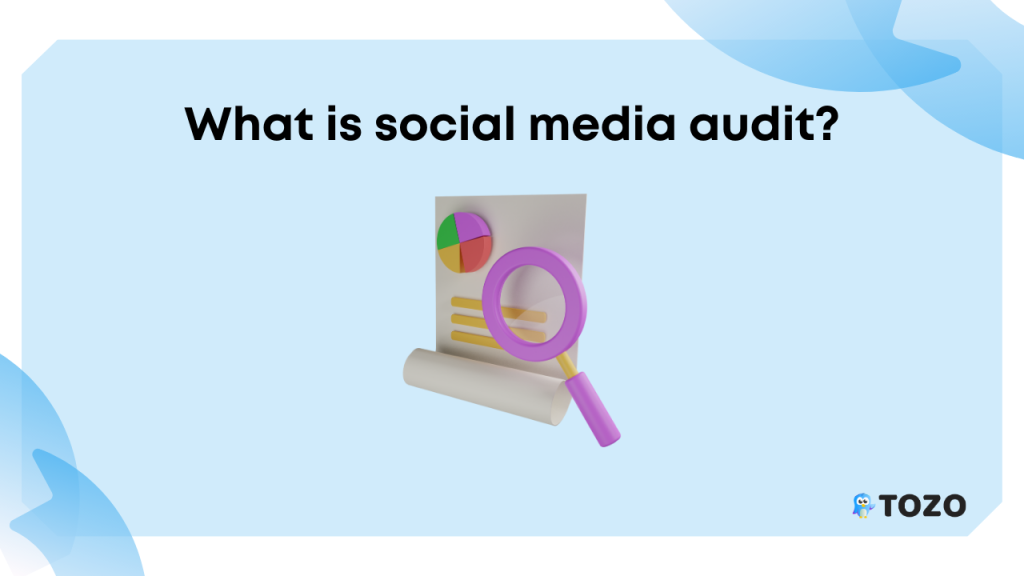
A social media audit is the process of examining and evaluating a brand’s social media presence and performance across various platforms.
It involves reviewing the content, engagement, and metrics of the brand’s social media accounts to identify strengths, weaknesses, opportunities, and threats.
The audit helps businesses to understand their social media strategy’s effectiveness, identify areas for improvement, and optimize their social media marketing efforts to achieve their goals.
Conducting a social media audit to gain insights into the preferences, behaviors, and expectations of their audience can help brands better serve their customers and achieve their business goals.
8 Steps to conduct a social media audit
1. Identify your social media profiles:

When identifying your social media profiles, it’s important to ensure you include all the platforms you’re currently using, as well as any that you may have created but are no longer using.
It’s easy to forget about a platform that you don’t use frequently, but it’s still important to include it in your audit.
You may also want to consider platforms that you’re not currently using, but that may be a good fit for your business.
Once you’ve identified all your social media profiles, it’s a good idea to make note of the following information for each profile:
- URL: The direct link to your profile
- Username: Your username or handle on the platform
- Date made: The date the profile was made.
- Description: A brief description of the purpose of the profile
- Key metrics: The key metrics you want to track for each platform (e.g., followers, engagement rate, reach)
2. Evaluate your profiles:
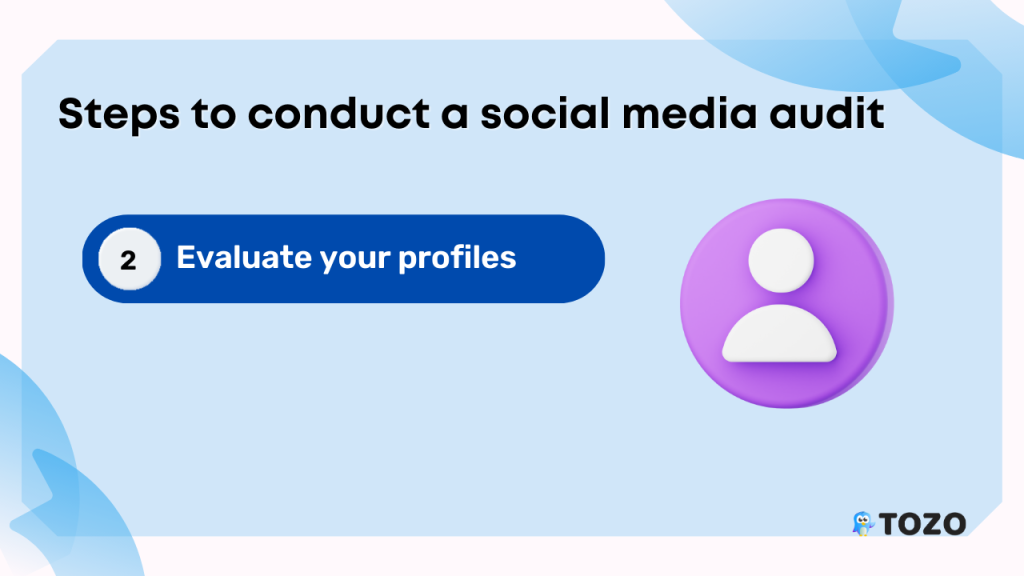
When evaluating your profiles, it’s important to ensure they are complete, up-to-date, and consistent.
Consistency is key to building brand recognition, so it’s important that all your branding elements are consistent across all platforms.
This includes your profile picture, cover photo, bio, and any other branding elements you use.
It’s also important to ensure that your profiles are up-to-date.
This includes updating your profile picture and cover photo regularly, as well as updating your bio to reflect any changes in your business.
If you have any new products or services, for example, you may want to update your bio to reflect that.
3. Analyze your content:
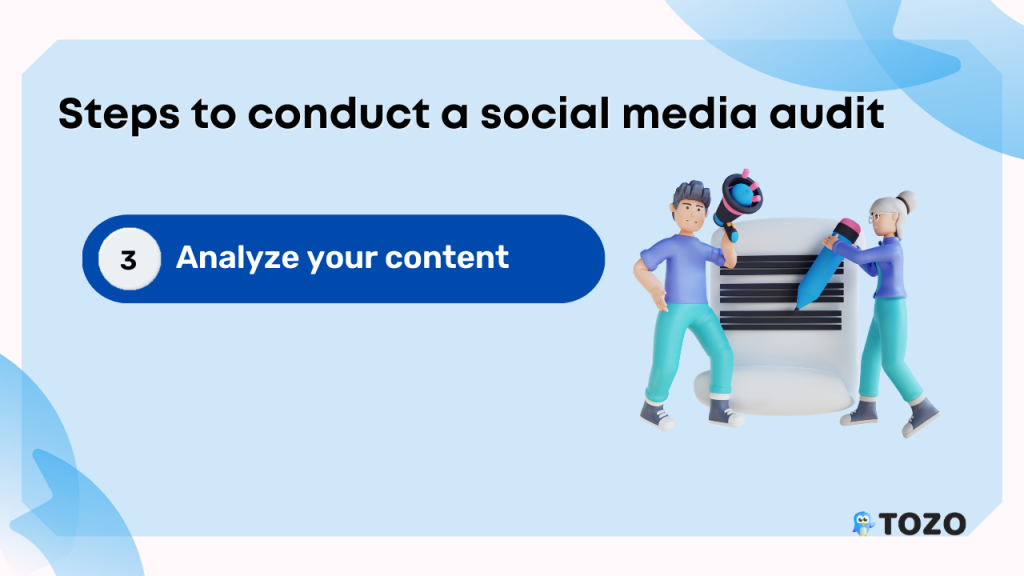
Analyzing your content is a crucial part of a social media audit.
By reviewing your past posts, you can determine what types of content are resonating with your audience and what types of content are not.
This information can help you adjust your content strategy going forward.
When analyzing your content, it’s important to look at both quantitative and qualitative data.
Quantitative data includes metrics like engagement rate and reach, while qualitative data includes things like comments and feedback from your audience.
It’s also important to look at your competitors’ content to see what types of content they are posting and how their audience is engaging with it.
This can give you ideas for new content and help you stay competitive in your industry.
4. Evaluate your performance:
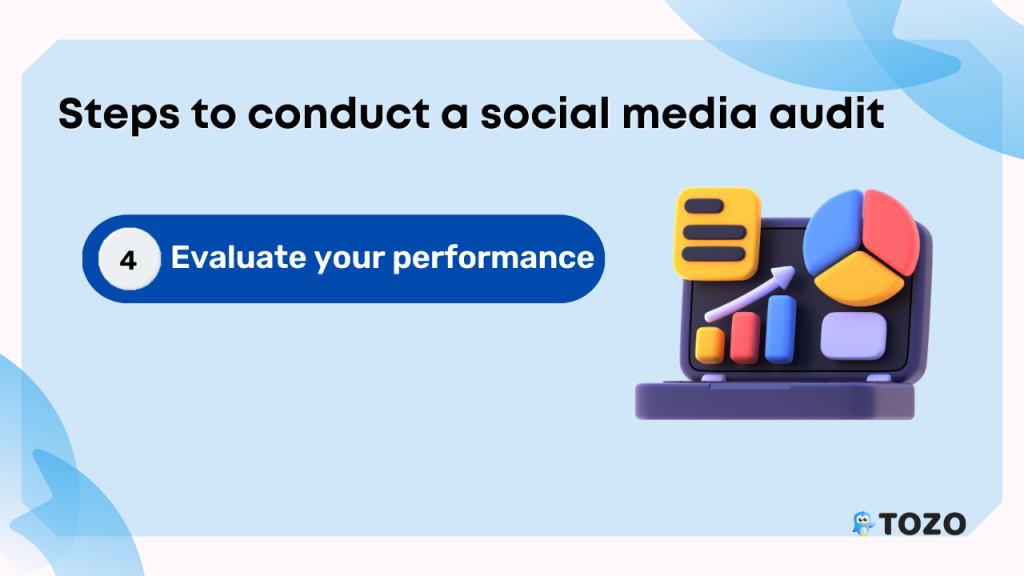
Evaluating your performance is perhaps the most important step in a social media audit.
By analyzing your metrics, you can determine whether you’re meeting your goals and where you need to improve.
If you’re not meeting your goals, you may need to adjust your social media strategy or set new goals that are more attainable.
When evaluating your performance, it’s important to focus on the metrics that matter most to your business.
For example, if your goal is to drive website traffic, you should focus on metrics like click-through rate and website traffic, rather than metrics like likes and shares.
It’s crucial to monitor your development throughout time.
This will allow you to see whether your social media strategy is improving or whether you need to make additional adjustments.
5. Review your audience:
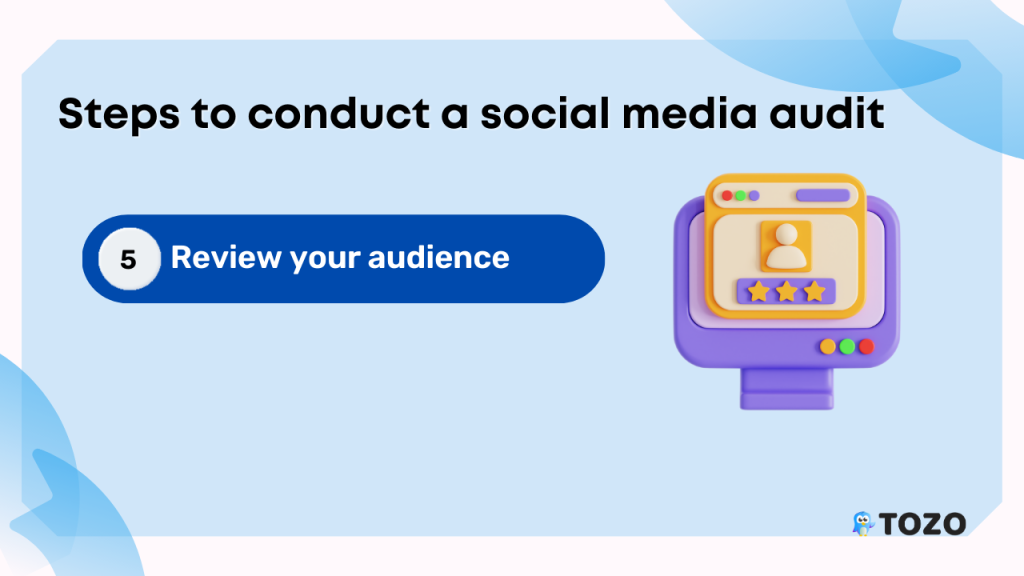
When reviewing your audience, it’s important to go beyond just basic demographics.
You should also consider things like their motivations for using social media, their pain points, and what type of content they’re most interested in.
You can use this knowledge to produce more relevant content for your audience.
One way to get a better understanding of your audience is to conduct social media listening.
This involves monitoring social media channels for mentions of your brand, products, or industry.
You can use tools like Hootsuite, Sprout Social, or Brandwatch to conduct social media listening and gain insights into your audience.
6. Identify areas for improvement:
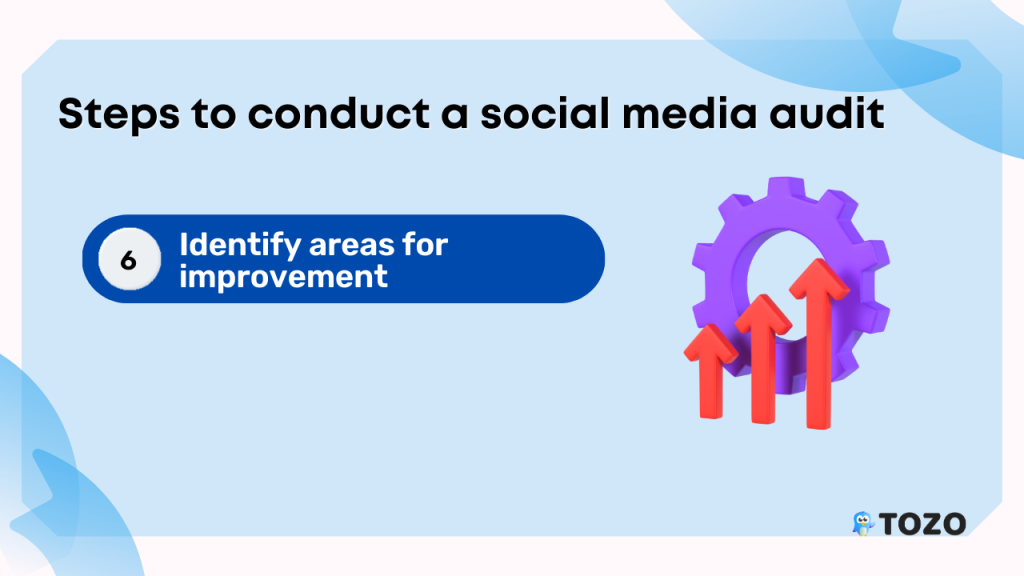
When identifying areas for improvement, it’s important to focus on the metrics that matter most to your business goals.
For instance, you should concentrate on metrics like click-through rate and website traffic if your objective is to increase website traffic.
If your goal is to increase brand awareness, you should focus on metrics like reach and engagement.
Another way to identify areas for improvement is to conduct a competitive analysis.
Look at what your competitors are doing on social media and see what’s working for them.
You can use this to find ways to enhance your own social media strategy.
7. Create an action plan:
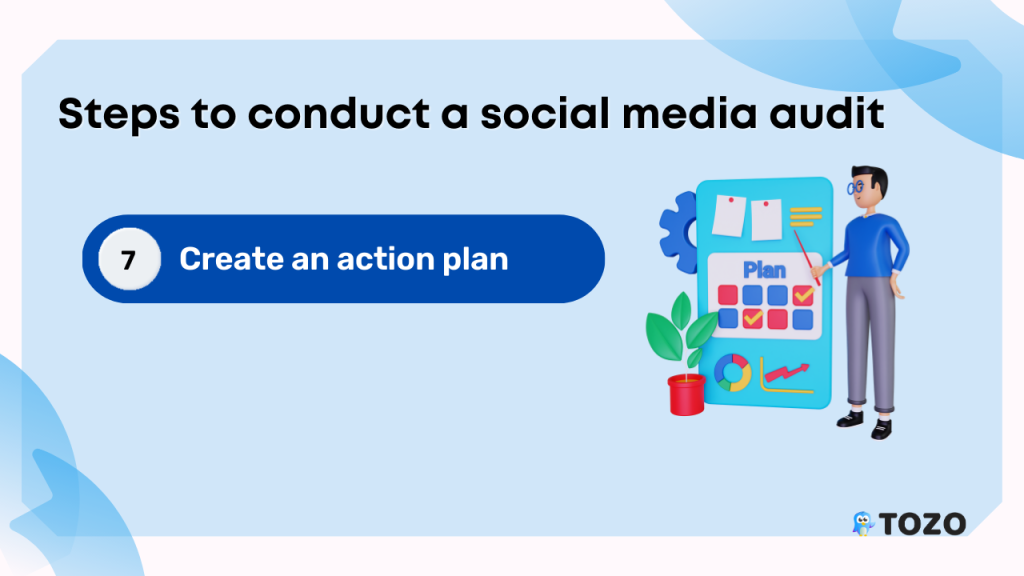
When creating your action plan, it’s important to be specific and realistic.
Divide your objectives into manageable, smaller tasks, and give each one a due date.
It’s also important to prioritize your tasks based on their importance and impact.
Your action plan should also include a budget for any paid social media advertising you plan to do.
Paid advertising can help you reach a wider audience and achieve your goals more quickly, but it’s important to allocate your budget wisely.
8. Implement your action plan:
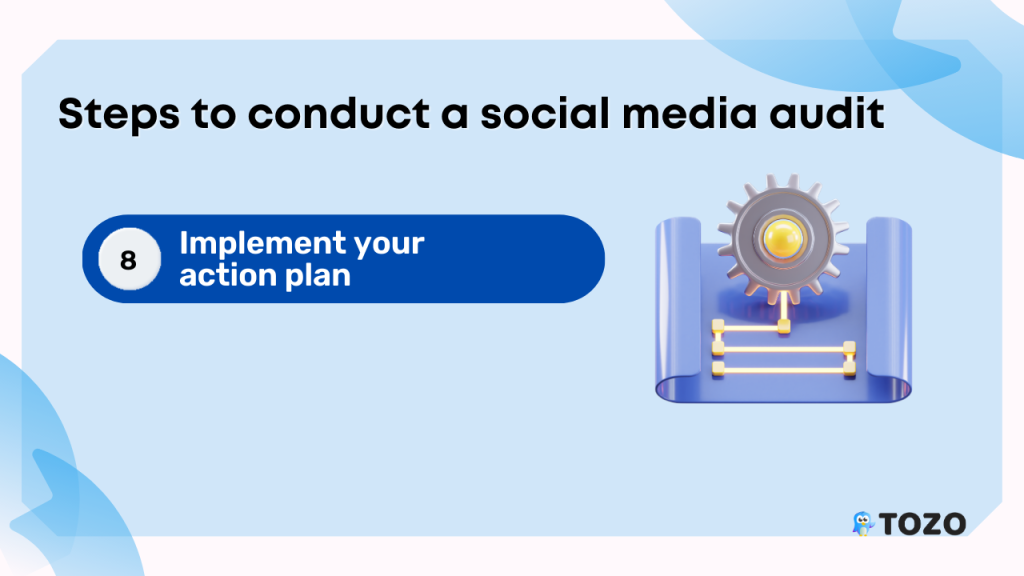
When implementing your action plan, it’s important to have a system in place for measuring your progress.
Track your metrics with social media analytics tools and change your strategy as necessary.
You should also schedule regular check-ins using tools like Tozo.Social to review your progress and make any necessary adjustments to your action plan.
Keep in mind that social media is continuously changing, so it’s critical to keep up with the most recent trends and industry best practices.
Attend industry events, read industry blogs, and follow social media thought leaders to stay informed and inspired.
By continuously improving your social media strategy, you can achieve your business goals and build a strong online presence.
Conclusion
Running a social media audit is an essential step towards improving your social media strategy’s effectiveness and achieving your business goals.
By following the steps outlined in this guide and using the free template provided, you can easily evaluate your brand’s social media presence and identify areas for improvement.
The audit can help you to optimize your content, improve engagement, and measure your performance against your competitors.
Regularly conducting social media audits and making necessary adjustments can keep your brand ahead of the curve and help you stay connected with your audience.
So, take the time to conduct a social media audit and use the insights gained to enhance your social media strategy and grow your business.



